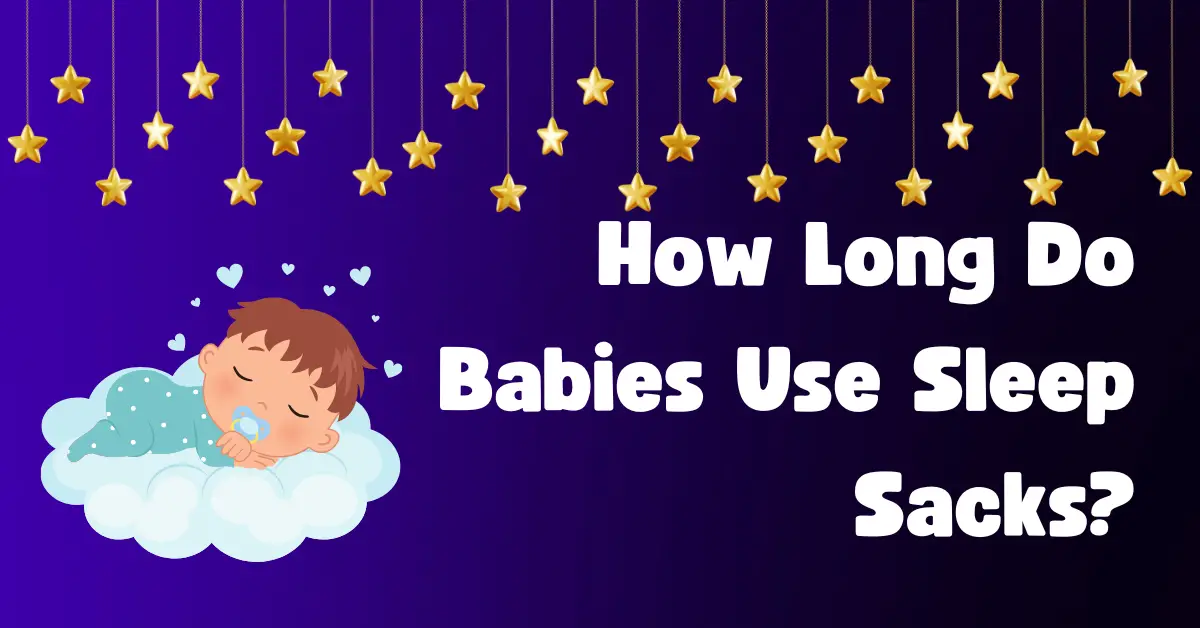Every parent knows the importance of ensuring their little one gets a good night’s sleep, but with so many products and guidelines out there, it can be overwhelming to determine the best and safest options. One common question new parents ask is, “How long do babies use sleep sacks?”
The short answer is that many babies use sleep sacks from the newborn stage up until they transition to a toddler bed, which can be around their first birthday or even later. But why are sleep sacks becoming the go-to choice for many parents over traditional blankets? And how do they offer a safer sleep environment for your precious bundle of joy?
What is a Sleep Sack?
A sleep sack is a specially designed sleeping garment for babies that provides warmth and comfort without the risks associated with loose blankets. Unlike traditional baby blankets that can be kicked off or become tangled, the baby wears the sleep sack more like an oversized onesie, ensuring they remain covered throughout the night.
The design of a sleep sack typically resembles a sleeveless dress or bag, leaving the baby’s arms free but covering their body and legs. This design not only ensures that the baby stays warm but also reduces the risk of suffocation, as there are no loose fabrics near the baby’s face. The bottom of the sleep sack is sealed, preventing little feet from poking out, while the top usually features a zipper or fastening mechanism for easy access during diaper changes or feedings.
In essence, sleep sacks offer a safe alternative to traditional blankets, providing babies with a cozy and secure environment to sleep in. As we’ll explore in the upcoming sections, their design and features align with many of the safe sleep guidelines recommended by experts, making them a favourite choice for new parents.
What differentiates a sleep sack from a wearable blanket?
While the terms are often used interchangeably, wearable blankets tend to be more versatile and can be used outside of sleep times, whereas sleep sacks are specifically designed for bedtime and nap time.
Recommendations from the American Academy of Pediatrics
Ensuring the safety of our little ones during their sleep is paramount, and the American Academy of Pediatrics (AAP) has set forth guidelines to help parents navigate this crucial aspect of child-rearing. Here’s what the AAP has to say about sleep sacks and the broader context of infant sleep safety:
- Safe Sleep Guidelines: The AAP strongly advises against the use of loose bedding, pillows, and soft toys in a baby’s crib. These items pose a risk of suffocation and can increase the chances of Sudden Infant Death Syndrome (SIDS). Sleep sacks, on the other hand, are designed to eliminate these risks, providing a snug and safe environment without the hazards of loose fabric.
- Risk of SIDS: Sudden Infant Death Syndrome is a tragic event where an otherwise healthy baby dies during sleep without any clear reason. While the exact causes of SIDS remain elusive, certain sleep practices have been identified as risk factors. The use of loose blankets, for instance, can lead to accidental suffocation if they cover the baby’s face. Sleep sacks, being free from loose ends and designed to stay in place, significantly reduce this risk.
- Temperature Regulation: Overheating is another factor believed to increase the risk of SIDS. The AAP recommends that babies be dressed in light clothing without any additional covering. Sleep sacks allow parents to choose the appropriate warmth level for their baby based on the room temperature, ensuring the baby doesn’t overheat.
- Positioning: The AAP advises parents to always place their babies on their backs for sleep. Sleep sacks support this recommendation by discouraging tummy sleeping, as the design makes it challenging for babies to roll over onto their stomachs.
In summary, the American Academy of Pediatrics’ guidelines emphasize the importance of creating a safe sleep environment for infants. Sleep sacks align well with these recommendations, offering a solution that keeps babies warm without the risks associated with traditional blankets and loose bedding. As parents, it’s reassuring to know that by choosing sleep sacks, we’re taking a significant step towards ensuring our babies’ safety during their most vulnerable hours.
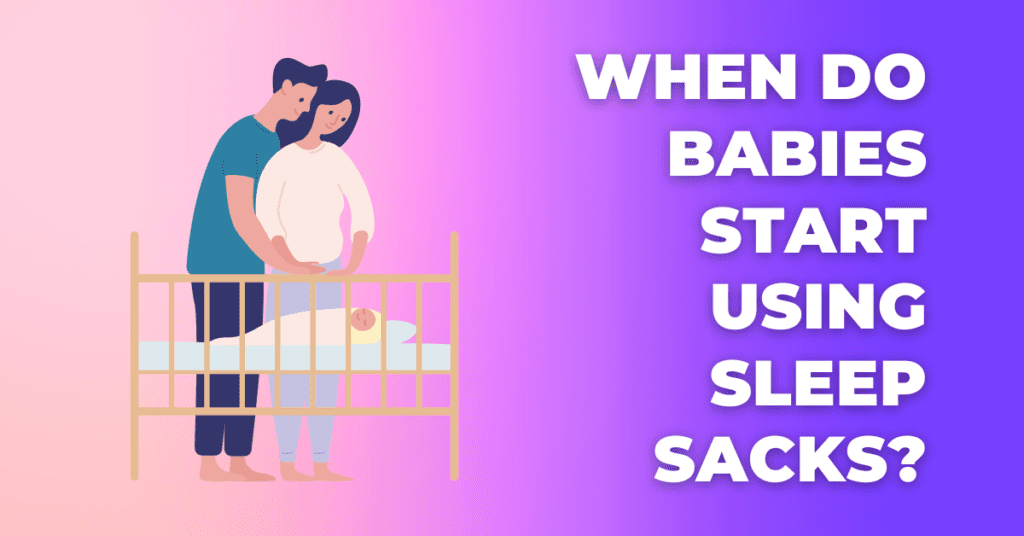
When Do Babies Start Using Sleep Sacks?
Embarking on the journey of parenthood introduces a myriad of choices, and one of the earliest decisions revolves around sleep solutions for newborns. Sleep sacks have emerged as a popular choice, and many parents wonder when it’s appropriate to introduce them.
Starting from the Newborn Stage: From the moment they arrive, babies exhibit a startle reflex, commonly known as the Moro reflex. This natural reflex can cause sudden jerking movements of their arms or legs, often disrupting their sleep. To counteract this, many parents turn to sleep sacks right from the newborn stage. These wearable blankets offer a snug environment reminiscent of the womb, providing babies with a sense of security. This comfort often translates to longer, more peaceful sleep stretches, making sleep sacks an attractive option from day one.
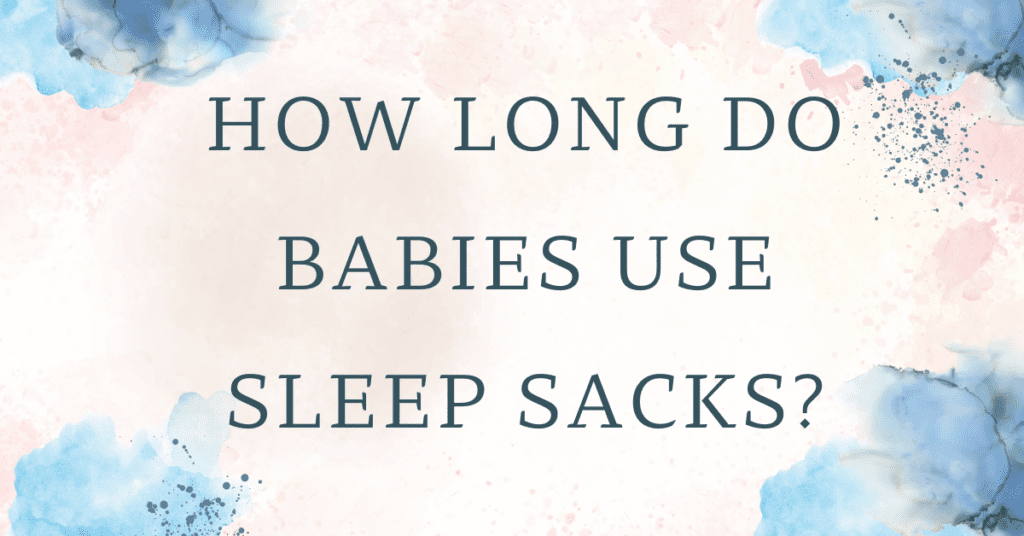
How Long Do Babies Use Sleep Sacks?
The duration for which a baby uses a sleep sack varies based on individual preferences and developmental milestones. For many, sleep sacks become a staple in their bedtime routine, accompanying them through various stages of infancy.
Typical Duration: Most babies use sleep sacks throughout their first year, with many continuing well into their toddler years. The comfort, warmth, and safety provided by sleep sacks make them a preferred choice for both babies and parents. However, as with all baby products, the key is to observe and adapt to the child’s evolving needs.
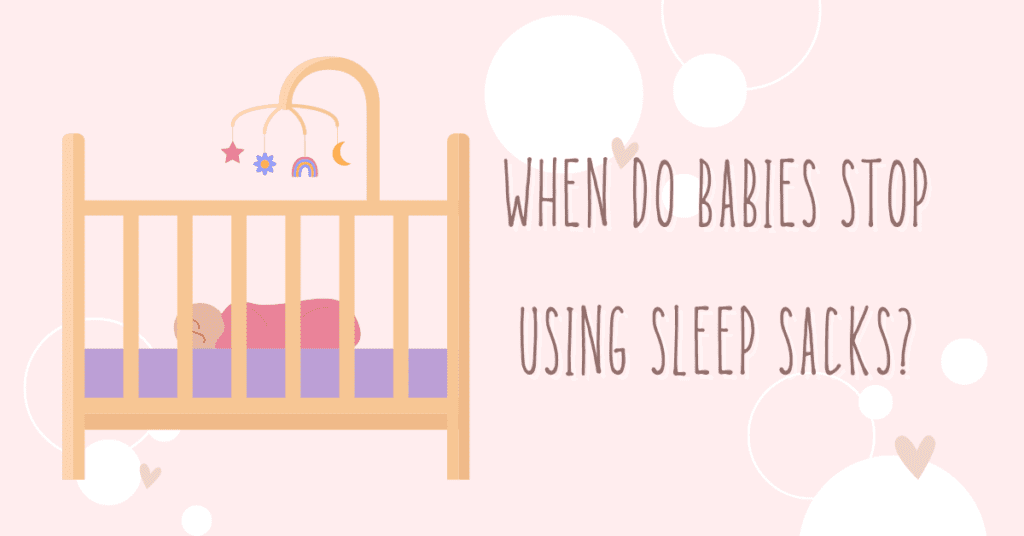
When Do Babies Stop Using Sleep Sacks?
As babies grow and develop, their sleep needs and preferences change. While sleep sacks offer numerous benefits, there comes a time when transitioning out of them becomes inevitable.
Signs It’s Time to Transition:
- Mobility: As babies become more active, standing or even attempting to walk, they might find the confines of a sleep sack restrictive.
- Comfort: With growth, some toddlers might feel too warm or express a desire for the freedom a thin blanket offers.
- Curiosity: A growing interest in traditional blankets or any expressed discomfort with the sleep sack can be indicators that a transition is on the horizon.
Safety First: Transitioning out of a sleep sack doesn’t mean compromising on safety. Parents should ensure that any new bedding is age-appropriate and free from suffocation risks. Introducing pillows or stuffed animals should also be approached with caution, keeping the child’s age and safety in mind.
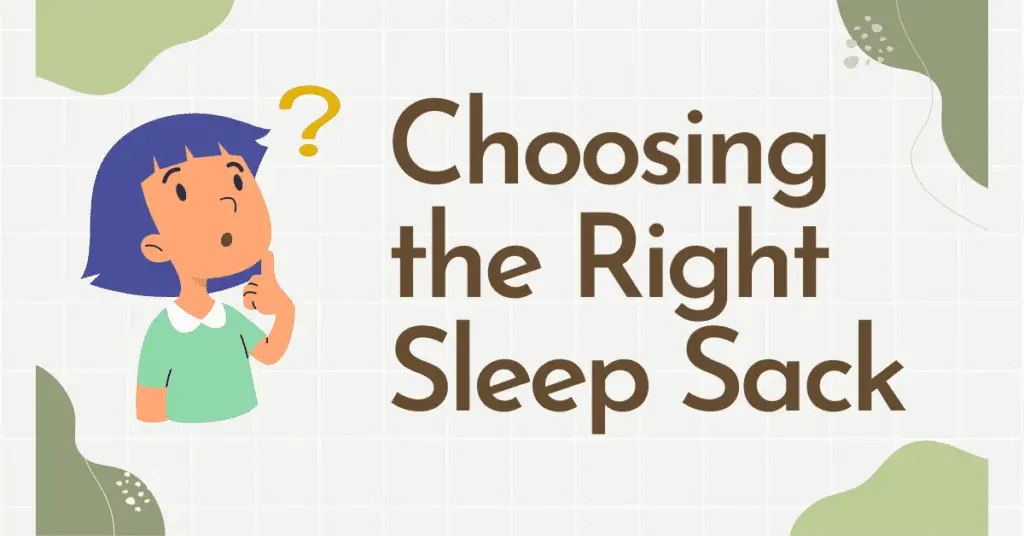
Choosing the Right Sleep Sack
With the myriad of options available in the market, selecting the perfect sleep sack for your baby can seem like a daunting task. However, by considering a few key factors, you can ensure that your choice aligns with your baby’s comfort and safety needs.
Size Matters:
- Appropriate Size for Baby’s Age: Sleep sacks come in a variety of sizes, typically categorized by age or weight. It’s essential to choose one that fits your baby snugly but not too tightly. A sleep sack that’s too large can pose a risk if the baby slips inside.
- Growth Considerations: Babies grow quickly, so consider a size that offers some room for growth, ensuring it’s not overly spacious.
Types of Sleep Sacks
- Sleeveless Sleep Sacks: These are the most common type, allowing the baby’s arms to remain free.
- Swaddle-Style Sleep Sack: Ideal for newborns, these combine the benefits of a swaddle with a sleep sack, helping to contain the baby’s startle reflex.
- Weighted Sleep Sacks: These have a slight weight to them, mimicking the feeling of a gentle hug, which can be soothing for some babies.
Material Choices
- Bamboo Fabric: Known for its softness and breathability, bamboo is an excellent choice for warmer climates or babies with sensitive skin.
- Merino Wool: This natural fibre helps regulate temperature, keeping babies warm in colder months and cool during warmer periods.
Convenient Features
- Easy Diaper Changes: Look for sleep sacks with a two-way zipper, allowing you to change diapers without fully undressing the baby.
- Adjustable Features: Some sleep sacks come with Velcro wings or other adjustable features to customize the fit as your baby grows.
Personal Preferences
- Design and Aesthetics: While safety and comfort are paramount, many parents also consider the design, colour, and patterns that align with their personal preferences or nursery themes.
Our Favourite Sleep Sack
HALO Sleepsack
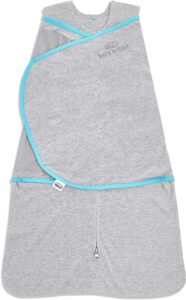
Our boys all used the HALO Sleepsack line. They make a variety of sleepsacks from the swaddle version pictured above to the next with open arms, and finally, the version with feet out once they were able to stand.
We were always impressed with the durability of HALO’s products, many of the sleepsacks were actually passed down from our oldest all the way to the youngest, so I have no problem recommending them to other new parents.
Special Considerations
While sleep sacks offer a myriad of benefits, there are certain special considerations to keep in mind to ensure the utmost safety and comfort for your baby. Addressing these nuances can help parents make informed decisions tailored to their baby’s unique needs.
Room Temperature
- Tog Rating and Colder Months: The tog rating, or thermal overall grade, of a sleep sack indicates its warmth. For colder months or cooler room temperatures, a higher tog rating may be appropriate. Conversely, in warmer climates or during summer months, a lower tog rating is ideal to prevent overheating.
- Temperature Regulation: Babies can’t regulate their body temperature as efficiently as adults. Ensure the room temperature is consistent and comfortable, ideally between 68°F and 72°F (20°C to 22°C).
Hip Dysplasia Concerns
- Freedom of Movement: It’s crucial to choose a sleep sack that allows your baby’s legs to move freely, reducing the risk of hip dysplasia. The design should be roomier at the bottom, ensuring the baby can flex their legs naturally.
Active Sleepers
- Escape Artists: As babies grow and become more mobile, some might try to stand or climb while in their sleep sacks. If your baby shows signs of being an “escape artist,” it might be time to transition to a different sleep solution or ensure the sleep sack design is suitable for active sleepers.
- Thickness and Mobility: For babies who move a lot during sleep, a thinner sleep sack might offer more comfort and less restriction.
Weighted Swaddles vs. Traditional Sleep Sacks
- Soothing Benefits: Weighted swaddles can mimic the feeling of a gentle hug, which can be calming for some babies. However, ensure the weight is appropriate for your baby’s size and age.
- Safety Considerations: Always consult with a pediatrician before using weighted sleep solutions to ensure they’re safe for your baby.
Transitioning from Swaddles
- Swaddle to Sleep Sack: As babies grow, they might start rolling or showing signs of outgrowing the swaddle. Transitioning to a sleep sack can offer a familiar yet safer environment for these babies.
Allergies and Skin Sensitivities
- Material Choices: For babies with sensitive skin or allergies, opt for hypoallergenic materials like bamboo or organic cotton. Always ensure the material is breathable to prevent overheating and skin irritations.
While sleep sacks are a versatile and safe sleep solution, it’s essential to consider these special factors to cater to your baby’s individual needs. Being attentive to these details ensures not only a good night’s sleep but also the well-being and comfort of your precious little one.
Popular Sleep Sack Brands and Options
Navigating the world of baby products can be overwhelming with the plethora of brands and options available. When it comes to sleep sacks, a few brands have stood out due to their quality, safety features, and parent reviews. Here’s a look at some of the most popular choices:
- Kyte Baby Sleep Bags:
- Known for their ultra-soft bamboo fabric, Kyte Baby offers sleep bags that are both breathable and hypoallergenic. Their range includes various tog ratings, catering to different temperatures and seasons.
- Halo Sleep Sack:
- A favourite among many parents and pediatricians, the Halo Sleep Sack is renowned for its safety features and versatile design. They offer both swaddle-style sacks for newborns and standard sleep sacks for older babies.
- Merino Kids:
- Crafted from fine merino wool, Merino Kids sleep sacks are perfect for temperature regulation. The natural fibres ensure babies stay warm during colder months and cool during warmer periods.
- Nested Bean Zen Sack:
- Nested Bean’s Zen Sack offers a unique weighted design, mimicking a parent’s touch to soothe babies. The gentle pressure is said to help babies sleep better and longer.
- ErgoPouch:
- With a focus on ergonomics, ErgoPouch offers sleep sacks that prioritize a baby’s natural sleeping position, reducing the risk of hip dysplasia.
- Certified Products and Recommendations:
- When choosing a sleep sack, it’s beneficial to look for certifications like the “Hip Healthy” acknowledgement from the International Hip Dysplasia Institute or endorsements from certified sleep consultants. Such certifications ensure the product meets specific safety and design standards.
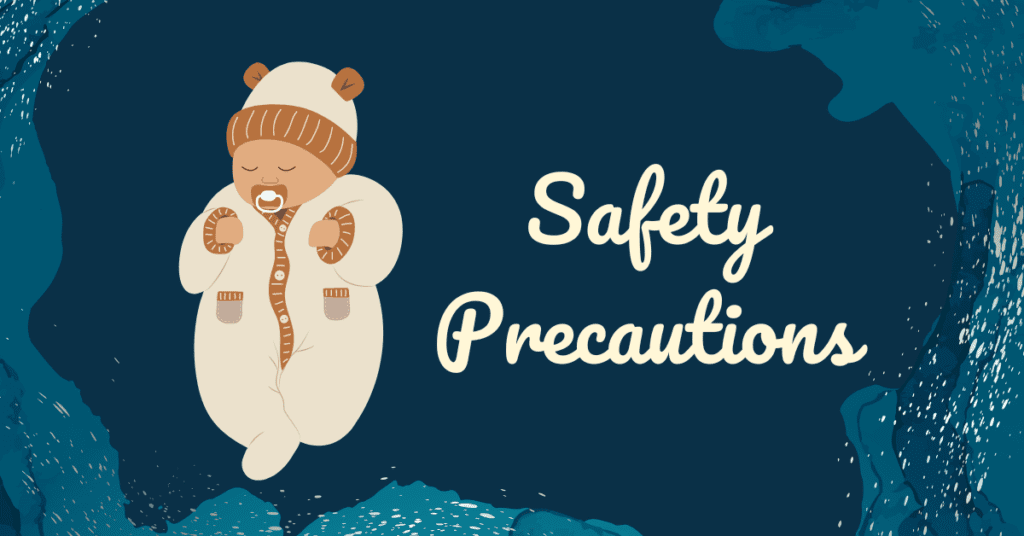
Safety Precautions
While sleep sacks are designed with safety in mind, it’s essential for parents to be aware of and follow certain precautions to ensure their baby’s well-being:
- Avoiding Loose Fabric:
- Ensure the sleep sack fits appropriately, with no excess fabric that could cover the baby’s face, posing a suffocation risk.
- Temperature Monitoring:
- Regularly check the baby’s neck or back to ensure they’re not overheating. If they feel sweaty or too warm, consider adjusting the room temperature or using a sleep sack with a lower tog rating.
- Emergency Situations:
- In the rare event that a baby seems distressed, has difficulty breathing, or shows any signs of discomfort, parents should immediately remove the sleep sack and consult a healthcare professional.
- Regular Inspections:
- Periodically inspect the sleep sack for any wear and tear, loose threads, or broken zippers that could pose a hazard.
- Washing and Care:
- Follow the manufacturer’s washing instructions to maintain the sleep sack’s integrity and safety features. Avoid using harsh detergents that could irritate the baby’s skin.
- Positioning:
- Always place the baby on their back for sleep, as recommended by the American Academy of Pediatrics, even when using a sleep sack.
In conclusion, while sleep sacks are a fantastic tool for ensuring safe sleep, it’s crucial for parents to remain vigilant and adhere to safety guidelines. Regular checks, proper maintenance, and being attuned to the baby’s needs will ensure a safe and restful sleep environment.
Wrapping Up How Long Babies Use Sleep Sacks
From the newborn stage, where the gentle embrace of a swaddle-style sleep sack can mimic the womb’s comfort, to the active toddler days where a standard sleep sack ensures warmth without restriction, these innovative products cater to a wide range of needs. With endorsements from reputable organizations like the American Academy of Pediatrics and glowing reviews from countless parents, it’s clear that sleep sacks have cemented their place in the modern baby care toolkit.
However, as with all things related to our children, vigilance, research, and attentiveness are key. By choosing the right product, adhering to safety guidelines, and staying attuned to our baby’s cues, we can ensure that sleep time is not just restful but also safe.
In this ever-evolving journey of parenthood, where nights can sometimes seem endless and the quest for peace of mind is constant, sleep sacks offer a comforting solution. They stand as a testament to the fact that sometimes, the best choices are those that prioritize simplicity, safety, and the innate needs of our little ones.

